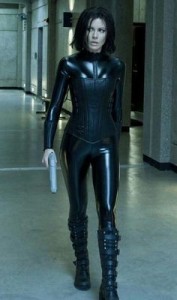Fields, J. (1999). “Fighting the Corsetless Evil”: Shaping Corsets and Culture, 1900-1930. Journal of Social History, 33(2), 355–384.
Fields focuses on the rhetoric that the corset industry used to redefine corsets and position them as essential items for all American women to own at the beginning of the 20th century. She connects the corseted body to medical and scientific rhetoric, changing conceptions of female beauty, the rise of feminism, morality arguments stating the importance of containing female bodies and sexuality as necessary for social stability, and to capitalism and economic gain from the sale of corsets to women as they attempt to conform to these norms and negotiate these rhetorics.
Importantly, Fields notes that “the corset became the locus for a number of competing significations” (p. 356) as scholars such as Steele, Roberts, Kunzle, and Banner all demonstrate that the corset has long-lasting and iconic power as a conveyor of social meaning, but disagree about what that meaning is, even in the Victorian period. Arguably, the corset’s meaning has become even more contentious and varied in the 20th and 21st centuries.
Fields looks at the “altered shape” of the corsets as a parallel trajectory to women struggling to “alter the shape of femininity and gender relations” (p. 357). There is a discursive relationship between the way that corset manufacturers used rhetoric about female bodies and social norms and the way that “women viewed, imagined, and experienced their own bodies” (p. 357). In addition, the changes that women demanded regarding their social status and mobility affected the types of corsets made and the language used to describe them. This discourse shaped and reshaped gender structures and identities as it also demonstrated changing body shapes under various corsets or — gasp — without a corset at all. The latter was something that corset manufacturers were heavily invested in preventing.
Fields notes that fashion is a codified system of of constraints that both signifies and represents a set of regulatory practices. Fashion is something people work within and against to “fashion” identities in such categories as “gender, personality, sexual preference, class, social status” and one works to express one’s individuality within this set of constraints that determine these categories and what is considered acceptable within them. She notes a significant change in the discourse about corsets due to industrialization: the arguments about moral turpitude and questionable respectability (which could be contained by a corseted body) were replaced by arguments about science and modernity. Uncorseted women went from being “loose” to being “imperfect, imperfect, unfashionable, and unscientific” as manufacturers preyed on fears of aging and connected the fears of unrestrained women to a fear of diminishing profits (p. 357). These discourses were bolstered by new science such as that of Havelock Ellis, which claimed that female humans required corseting because of evolutionary reasons that female bodies had more difficulty making the transition from horizontal to vertical. Corset manufacturers used such scientific studies to demonstrate both the safety and necessity of corseting.
Women had more access to sports and physical exercise in the 1920s and demanded less restrictive garments. This prompted manufacturers to develop and market “sports corsets made of lighter and more flexible materials” ( p. 358). Dancing, especially the tango, also affected corset use. As women began taking off stiff corsets at parties, manufacturers responded by making “dance corsets” (p. 359-360). This had the added bonus of requiring women to purchase not just one or two corsets, but many, for various occasions and needs. Fields notes that corsetlessness had been “long identified with radical feminist and utopian movements” and the idea that woman could decide to “support herself” by going without the support of a corset. Throwing aside the corset was seen by many as a sign of radicalism and manufacturers enlisted the help of scientific studies to demonstrate that corsetlessness was a threatening menace for such reasons as: “dissipation of muscular strength, injury to internal organs, corruption of standards of beauty, damage to moral fiber, contimination of race pride and purity, and destruction of American sovereignty” (p. 363). These themes emerged from discourse analysis of trade journal articles about corsets in US publications in the 1920s. She categorizes the tactics of corset panic articles as “denial, attack, and incorporation” and demonstrates that the proscriptive discourses were used to “infuse corset use with ideologies of domination” and “panic about losing control over their female market” being eased by reasserting control over the female body (p. 364). During this time between 1920 and 1950, corsets were renamed girdles, and the junior department was born to train up young women to wearing foundational garments despite their generally slim figures not needing them. One of the most insidious and ingenious discourses was the naturalization of the corset, making the corseted body more natural than an uncorseted one. Wearing a natural corset produced a natural female form; to be natural was to wear one of the new corsets that conformed the body to what was deemed natural by society.
Manufacturers also used racial rhetoric that appealed to fears of looking like a “squaw” or having a “wayback” ancestor that had passed on the “mattress-tied-in-the-middle’ proportions” (p. 366-367). They also attempted to show that uncorseted women would never marry well, since they would be perceived as too domineering and of the “Amazon variation” (p. 367). Women who dared to go uncorseted would also then be subjugated by a new master: the exercise regimen necessary to maintain the female form once muscles began to inevitably sag. Thus to go corsetless was to be constrained by other norms, and to be seen as unfeminine … “the woman with a tight-muscled tense abdominal wall, flat hips, mannish chest, is usually to be pitied … the number of biological mistakes among females are [sic] increasing” (Schoemaker, qtd. in Fields, p. 367).
This piece will be interesting to use as I look at the changing meaning of the corset, and how the corset is used as a way to enforce and control female bodies while at the same time women embrace and re-perform the corseted female body in subversive ways. It seems to me this dynamic is played out on the corseted female action hero’s body. She represents at once the dominant ideology of performed femininity, and a subversive ideology of female power. What is also interesting to me is that corseted female action heroes would fall into the category of women who do not “need” corsets because they are the smaller bodied, physically fit women who have the strength and agility to perform action-based scenes and acrobatics. Indeed I am wondering if the corset is used to promote and accentuate femininity so that they do not appear too “mannish.” I am also wondering if the constraint of the corset represents a dominant ideology continuing to control the female action hero. I’m considering comparing the corseted torso to a bullet-proof vest. Or Selene’s costume to Batman’s.


